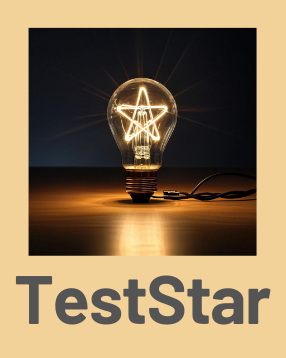Test Your Assumptions: A Case Study in Challenging Testing Biases
Introduction
Have you ever felt that nagging suspicion that something might be wrong with your testing approach? Perhaps a bug slipped through the cracks, or user feedback revealed unexpected issues. These situations can often be traced back to a silent enemy: testing biases.
Testing biases are unconscious preconceptions that can influence how we approach software testing. They can lead us to over-test certain functionalities while neglecting others, ultimately compromising software quality. But fear not, fellow testers! This is exactly why we’re here today.

In this post, we’ll delve into the world of testing biases through a captivating case study. We’ll follow a fictional testing team as they grapple with their own biases and embark on a journey of self-discovery (and improved testing!). By the end, you’ll gain valuable insights into how to identify and challenge your own biases, leading to more effective and thorough testing practices.
Case Study: The Rise of “InstaBuy”
- Setting the Stage:
Get ready to be whisked away to the exciting world of e-commerce! Our story unfolds as a development team prepares to launch their latest creation – “InstaBuy,” a revolutionary mobile app designed to streamline the online shopping experience. The app boasts features like one-click purchases, personalized product recommendations, and seamless integration with popular payment gateways.
Our testing team, a dedicated group of individuals, is eager to ensure the flawless launch of “InstaBuy.” However, each member brings their own unique background and experiences to the table, which can unknowingly influence their testing approach. For example, Sarah, the team lead, has a strong focus on security testing, while David, a recent graduate, tends to prioritize user interface (UI) aesthetics.
- Testing Process with Biases:
With launch day approaching, the team dives headfirst into testing “InstaBuy.” Their initial approach reflects their individual biases:
Security Focus: Sarah leads the charge, meticulously testing login features, payment gateways, and data encryption protocols. However, this focus on security might lead the team to spend less time on other functionalities such as product search and filtering.
UI Bias: David gets lost in the visual appeal of the app, ensuring every button is perfectly aligned and every color scheme is aesthetically pleasing. While important, this focus might overshadow more critical testing of app functionalities.
- Recognizing the Biases:
Disaster strikes! Shortly before launch, a flurry of negative user feedback throws a wrench into the team’s plans. Users report difficulty finding specific products and express frustration with the app’s search functionality – an area largely overlooked during testing.
This unexpected snag forces the team to re-evaluate their testing approach. They begin to suspect that their individual biases might have skewed their testing focus, leading to incomplete test coverage.
- Challenging the Assumptions:
With a renewed sense of purpose, the team embarks on a mission to confront their biases. Here’s how they approach it:
Open Dialogue: The team prioritizes open communication. They schedule a dedicated brainstorming session where everyone feels comfortable openly discussing their individual testing habits and potential biases. This creates a safe space for honest reflection, allowing them to learn from each other’s experiences and identify areas where biases might be influencing their approach.
Shifting Perspectives: To gain a broader understanding of user needs, they incorporate user feedback into their testing strategy. This helps them move beyond aesthetics and focus on critical functionalities.
Exploratory Testing: They adopt exploratory testing techniques, venturing outside pre-defined test scripts to identify unexpected issues and edge cases that might have been missed previously.
- Redefining the Testing Approach:
Armed with newfound awareness and diverse testing techniques, the team revises their approach:
Balanced Testing: They ensure a more balanced testing approach, devoting adequate time to security, UI elements, search functionality, and various user scenarios.
User-Centric Focus: User feedback becomes an integral part of the process, guiding them towards the areas that require the most attention.
Shift in Priorities: While core functionalities like security remain important, the team prioritizes testing areas previously neglected, like product search and user navigation.
- Results and Learnings:
The revised testing approach proves to be a game-changer! By identifying and addressing previously overlooked issues, the team significantly improves the overall quality and usability of “InstaBuy.” The launch is a success, with users raving about the app’s smooth functionality and intuitive design.
This experience serves as a valuable lesson for the team. They learn that acknowledging and challenging testing biases is crucial for effective software testing.
Conclusion:
Testing biases can be a silent threat, but with awareness and proactive measures, they can be overcome. Here are some key takeaways:


